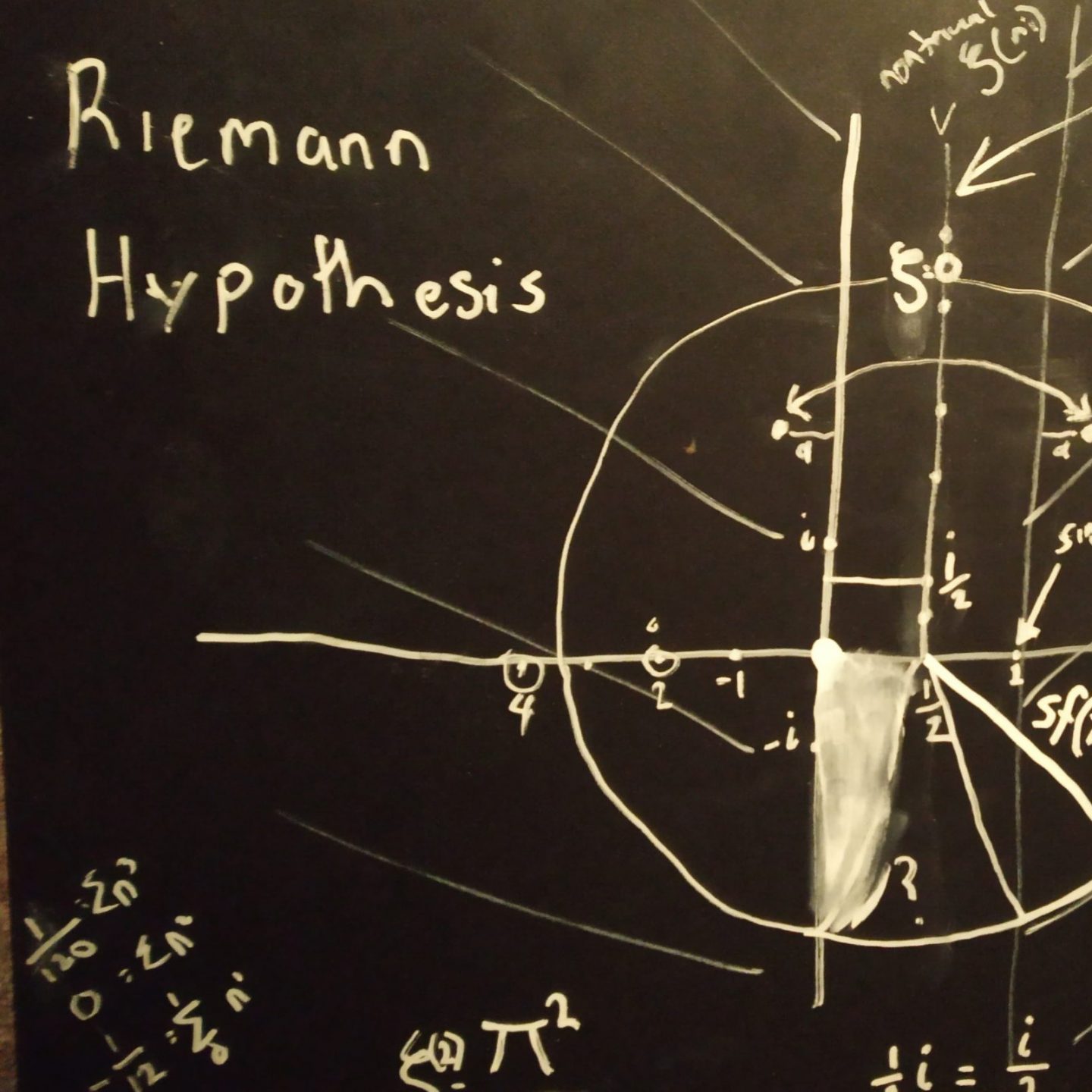If you are reading this post in search of insights, you may be disappointed. This is the story of me, mucking about with maths I hardly understand and postulating a lot of weird ideas about circles.
Specifically, I figured I would have a go at cracking the Riemann hypothesis. Yeah, a bit bold. Spoiler alert – I did not solve it. I did have some fun shaking the dust off the old maths brain after an age and a half in cold storage.
First, WTF is the Riemann hypothesis?
In mathematics, the Riemann hypothesis is a conjecture that the Riemann zeta function has its zeros only at the negative even integers and complex numbers with real part 1/2. … These are called its trivial zeros. However, the negative even integers are not the only values for which the zeta function is zero.
Riemann hypothesis, Wikipedia
This is one of the Millennium Problems (worth a million dollars). Being bored, I took a crack at it. After all, there is a prize for getting this one.
Now, some sensible stuff about the Riemann hypothesis
Next, as much as I understood about it all
All Riemann zeta functions of value greater than one converge on a limit and often can be expressed as pi to some power over some number. By analytic continuation results for less than zero can also be found. There are trivial zero results on even number negatives.
The negative side and the possitive side have different values on the real number line and onto the complex plane of numbers. This is based on the video above not saying that there were trivial zeros in the possitive range.
For real part 1 we have a singularity and there is no possible answer (as far as we know) due to it being divergent.
The Riemann hypothesis – for which a billion dollars is on offer for proving or disproving – says that the 0.5 real part is where the non-trivial zeros are. I took this to mean that it was always zero. So what follows might be utter bunk.
Axiom one: assume true
Starting off with a large helping of begging the question, I assumed that the non-trivial zeros are all on the real number 1/2 (0.5) and no where else.
The result is a black board that looks like this:

What on earth was I doing?
What we have here is a bunch of smudges because I am a clumsy clot when it comes to liquid chalk. We also have a diagram expressing what I shall call Matthew Brown’s circle hypothesis of the Riemann hypothesis.
How I got to that is noticing the recurrence of the value pi in the resultant answers. For example, pi squared over six. This suggested circles to me.
Pi, I think, crops up a lot when cycling values through the complex plane. This is either true or utter bunk. I don’t know. I’m guessing, to be honest.
Matthew Brown’s circle hypothesis of the Riemann hypothesis
If we treat the 0.5 real part as the origin, we could say that with some function of pi and r (radius) we can translate a value from the positive to the negative using the 0.5 real and the nearest non-trivial zero complex parts as the circle centre.
In other words, along any line within the complex part of the possible values to plug into the zeta function, we can describe a circle that translates positive outcomes to negative.
I assume this is true and move on because what do I actually know about analytic continuation? (Spoiler alert – not a thing). Yes, I’m just making happy assumptions, assuming I’m right and carrying regardless.
If Matthew Brown’s circle hypothesis of the Riemann hypothesis holds true then r=0 for real part 0.5 and thus some function of pi and r comes out at zero. But if the diameter of the circle described in the translation is non-zero, other results are possible.
It may be entirely reasonable to assume that all values inside zero and one can be described as circles arround the non trivial zeros and thus would have non-zero r and therefore always be non-zero.
Eh, What?
Yeah, exactly.
The odds are this is about as useful to maths as melted chocolate is for ending global warming. It sounds like confused gobbledygook now I read it back to myself.
If by blind luck I have actually hit upon something and someone who knows what they are talking about cares to write a paper. A nice credit would be fine (and a fair share of the prize).
The odds favour me being way off base but I would be happy for an expert to explain how and why. Please feel free to educate me. That’s what comment boxes are for.
Before you ask – yes, I probably have too much time on my hands.

